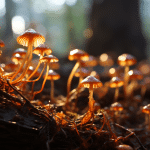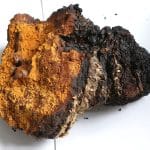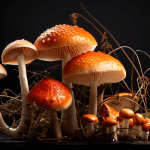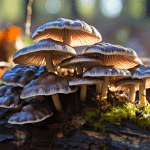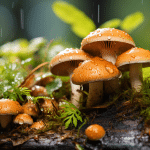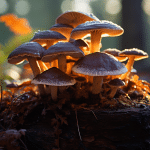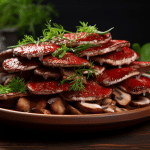Growing mushrooms starting with pre-made grain spawn is one of the easiest ways for beginners to take up mushroom growing. Growing mushrooms from grain spawn is slightly more involved than growing mushrooms from a grow kit that you can find online, but the results are absolutely worth the effort.
You get much larger yields, more insight into the process, and an opportunity to grow more mushrooms than you will ever know what to do with.
Here’s a great video by our friends at FreshCap diving into the details:
Making Your Own Grain Spawn to Grow Mushrooms
Without question, if you are going to truly get into the hobby of growing mushrooms, making your own spawn is going to be a necessary part of the process. It involves adequately watering and pressure-sterilizing the grains, inoculating them with the fungus cultures of your choice, and propagating the spawn via a number of seed-to-grain transfers until you have a nice batch of pure, completely populated spawn.
This process is what occasionally causes novice growers to evade. It requires a pressure sterilizer, clean lab conditions, and skill in transferring cultures and grains correctly, all the while keeping contaminants at bay.
Learn more: Are mushrooms vegetables
In reality, this is not too difficult, completely doable for someone who is willing to put in the little bit of time it takes to master this technique. But what if you just want to start growing tons of mushrooms without getting your lab coat on. That is where commercially produced grained spawn comes in!
The Different Types of Grain Spawn
Grain spawns are usually made with Rye, millet, sorghum, or some combination of these three. It is likely to come in whatever species you want to grow, though commonly available varieties are varieties of oysters (Blue, Pink, Yellow, King, Pearl), Shiitake, and Lions Mane.
Spawn is a living, breathing organism, essentially an in-growth mycelium culture. It wants to continue running; keep growing and expanding, colonizing substrates, and eventually produce fruiting body (stem and cap).
It’s best if you get the freshest spawn possible. If you are lucky, you live close to a spawn maker, and you can simply walk over to get some fresh spawn. Unfortunately, for most people, spawn is not something that you can just pop into the local store. However, there are plenty of places that will deliver fresh spawn directly to your doorstep.
Common species will be ready-to-go, and will have stock, while less-common varieties can take a week to three weeks to be prepared before being shipped. It is best to select the fastest delivery option when ordering your spawn online, and then pick it up quickly!
Learn more: Growing mushrooms in straw
The less time the spawn has spent in transit, the better chance you have of having the spawn working and ready to go the moment you get it. Check with your supplier to make sure your chosen species, distance for delivery, and season are compatible before ordering.
Care Taking When Growing Mushrooms From Grain Spawn
You need to get your wheat ready before that comes in. The faster you can get one, the better chance you have for success.
Depending on which growing method you chose, that means having your base in bulk, ready for sterilization or pasteurization, and having your grow containers ready, complete with space for the fruiting body to grow. This can be outdoors (at the appropriate time of the year), or indoors in a grow room, or even just in a spare room in your house or a basement.
Check on the germination of the grains when they arrive. It should look white and clean, without any obvious signs of contamination. If, for whatever reason, you find any green mould inside of the bag, then it might not be worth opening either.
With certain species, there is going to be natural excretion, like orange metabolites that are sometimes released from Oyster mushroom mycelium. This is not an issue, and it will not impact your growth. Some species will begin pinning to a spawning kernel.
Lions mane and pink oyster mushrooms typically will pin first. This is generally not an issue, and spawns can simply be used like normal. If pins are big, then they are worth taking out and throwing away before using the spawn.
This is because the older fruit bodies may become sources of contamination while establishing colonies on the mass substrate. If you cannot use your starter immediately, try to keep it somewhere cool, dry, and dark. Most species will do fine in the refrigerator, though you should take care with tropical species like Pink and Yellow oysters, which may die off in a fridge.







